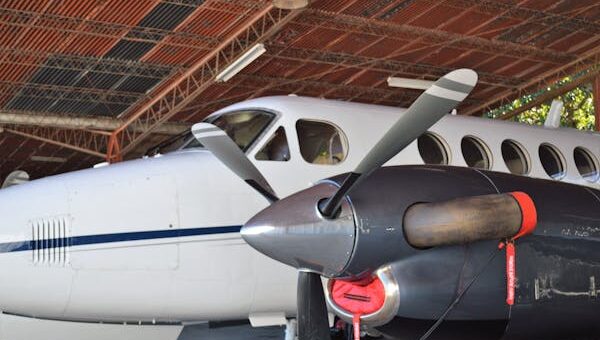
Introduction
Aerodynamics plays a pivotal role in shaping commercial aircraft, influencing everything from fuel efficiency to passenger comfort and safety. In the fiercely competitive airline industry, where operational costs and environmental impact are under constant scrutiny, optimizing aerodynamic design has become more critical than ever. This comprehensive article explores the fundamental principles of aerodynamics in commercial aircraft, key design considerations, their impact on performance, and emerging trends driving the future of aviation.
1. Understanding Aerodynamics: Fundamental Principles
1.1 What Is Aerodynamics?
Aerodynamics is the study of how air interacts with solid objects—in this case, aircraft. It involves analyzing the forces generated by airflow around the aircraft’s surfaces and how these forces affect flight performance. The four primary aerodynamic forces acting on an aircraft are lift, drag, thrust, and weight. Understanding these forces is essential for designing an aircraft that can efficiently take off, cruise, maneuver, and land.
-
Lift: Generated primarily by the wings, lift opposes gravity and keeps the aircraft in the air.
-
Drag: The aerodynamic resistance that opposes the aircraft’s forward motion.
-
Thrust: Produced by the engines to overcome drag.
-
Weight: The force due to gravity pulling the aircraft downward.
1.2 The Importance of Lift-to-Drag Ratio
One of the critical parameters in aerodynamics is the lift-to-drag ratio (L/D ratio). It measures the efficiency of an aircraft’s aerodynamic design. A higher L/D ratio means the aircraft can generate more lift for less drag, improving fuel efficiency and range. Designers constantly strive to maximize this ratio through wing shape, surface smoothness, and overall aircraft configuration.
2. Aerodynamic Design Considerations in Commercial Aircraft
2.1 Wing Design and Shape
The wing is the primary lift-producing surface of any aircraft. The design of the wing profoundly affects aerodynamic performance. Key elements include:
-
Airfoil shape: The cross-sectional shape of the wing, optimized to produce sufficient lift while minimizing drag.
-
Aspect ratio: The ratio of wing span to wing chord. Higher aspect ratios reduce induced drag, benefiting fuel efficiency.
-
Winglets: Small vertical extensions at wing tips that reduce wingtip vortices and drag.
Example Table: Impact of Wing Parameters on Aerodynamics
| Parameter | Effect on Aerodynamics | Impact on Aircraft Performance |
|---|---|---|
| Airfoil Shape | Alters lift and drag characteristics | Enhances lift, reduces drag |
| Aspect Ratio | Higher ratio reduces induced drag | Increases fuel efficiency, improves range |
| Winglets | Minimize vortices, reduce drag | Lower fuel consumption, improved stability |
2.2 Fuselage Design
While wings are the focus for lift, the fuselage—the main body of the aircraft—significantly contributes to overall drag. Aerodynamic shaping of the fuselage minimizes pressure drag and turbulence, improving speed and fuel efficiency. Designers employ streamlined shapes and smooth surfaces to optimize airflow.
2.3 Engine Placement and Nacelle Design
Engine nacelles and their placement affect drag and overall aerodynamic stability. Integrating engines beneath the wings reduces interference drag and helps balance the aircraft’s center of gravity. The nacelle’s shape is designed to smooth airflow and reduce noise, contributing to environmental and performance goals.
3. Impact of Aerodynamics on Commercial Aircraft Performance
3.1 Fuel Efficiency and Environmental Impact
Aerodynamic improvements directly translate to better fuel economy, reducing operating costs and environmental footprint. Commercial airlines are under pressure to lower carbon emissions, and aerodynamic optimization remains one of the most effective strategies. Even small reductions in drag can lead to significant fuel savings over an aircraft’s lifecycle.
3.2 Flight Stability and Control
Aerodynamics influences flight stability and handling characteristics. Well-designed aerodynamic surfaces ensure predictable responses to pilot inputs and atmospheric disturbances, enhancing passenger comfort and safety.
3.3 Noise Reduction
Aerodynamic refinement also plays a role in noise abatement. Smoother airflow reduces turbulence and engine noise propagation, helping aircraft meet stringent noise regulations near airports.
4. Advances and Innovations in Aerodynamic Design
4.1 Computational Fluid Dynamics (CFD)
Modern aircraft design heavily relies on computational fluid dynamics simulations. CFD enables engineers to model airflow in intricate detail, testing different shapes and configurations virtually before physical prototypes are built. This technology accelerates innovation while reducing development costs.
4.2 Laminar Flow Control
Laminar flow control techniques aim to maintain smooth airflow over surfaces to minimize drag. Innovations in surface materials and active flow control devices are pushing the boundaries of laminar flow maintenance, promising even greater aerodynamic efficiency.
4.3 Blended Wing Body (BWB) Designs
Blended wing body configurations merge the wing and fuselage into a single lifting surface. This revolutionary design reduces drag and increases internal volume, offering potential improvements in fuel efficiency and passenger capacity.
5. Challenges and Future Directions
5.1 Balancing Aerodynamics with Structural and Operational Needs
While aerodynamic efficiency is vital, it must be balanced with structural integrity, passenger comfort, and manufacturability. Design compromises are often necessary to meet regulatory standards and operational requirements.
5.2 Sustainable Aviation and Aerodynamics
As the aviation industry moves toward sustainability, aerodynamic design will play a crucial role in enabling alternative fuels, electric propulsion, and hybrid aircraft. Innovations in aerodynamics will be key to achieving lower emissions without sacrificing performance.
Conclusion
Aerodynamics remains at the heart of commercial aircraft design, shaping the future of air travel in terms of efficiency, safety, and environmental responsibility. By continuing to innovate in aerodynamic principles and technologies, the aviation industry can meet the growing demands of passengers and regulators alike. What aerodynamic advancements do you find most promising for the next generation of commercial aircraft? Share your thoughts and join the conversation on how aerodynamics will transform aviation’s future.